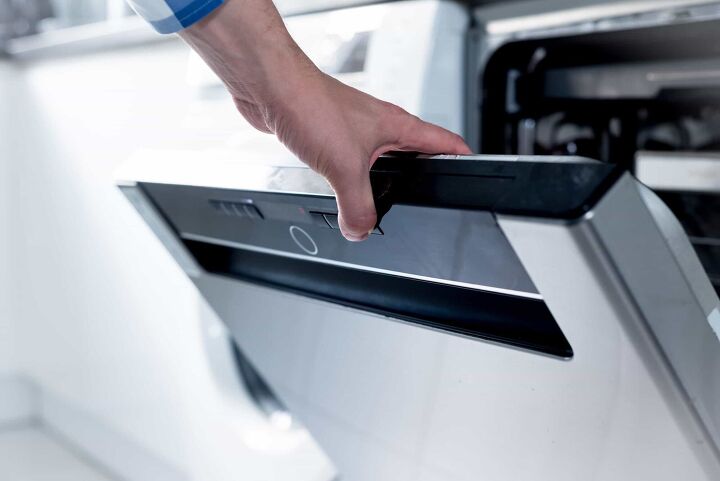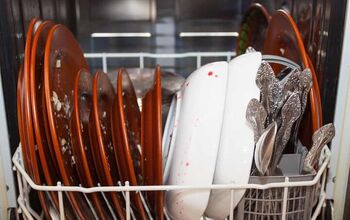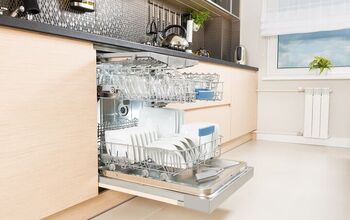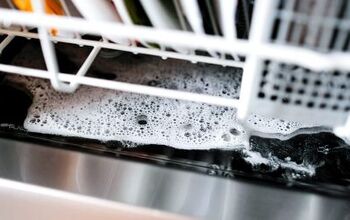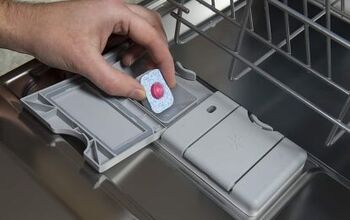Why Is My Dishwasher Stuck On Wash Cycle? (We Have A Fix)

With the invention of the dishwasher, cleaning the kitchen has never been easier. Gone are the days of scrubbing pots and pans until your arms are sore. But what happens if your dishwasher is stuck on the wash cycle?
If your dishwasher is stuck on the wash cycle, this could be due to a malfunction with the water heating cycle. You will need to check the thermostat, float switch, and also the timer. If any of these are the culprit, then you will need to replace them or replace your dishwasher.
Today we’re going to take a look at the four main malfunctions that could be causing the problem and how to solve them. Before you know it, your dishwasher will be working as it should in no time.
Do You Need Appliance Repair Services?
Get free, zero-commitment quotes from pro contractors near you.

What Causes a Dishwasher to Stay on the Wash Cycle?
There are several things that can go wrong with a dishwasher. Sometimes the soap door gets stuck shut, while other times it’s running cold water. Let’s take a look at the four main causes of the appliance being stuck on the wash cycle.
Water Heating Cycle
One of the main things that can cause the machine to be stuck on a wash cycle is the water heating. When you press the start button at the beginning of a new load, the dishwasher fills with water.
It then pauses while the water is being heated until it reaches a proper temperature. This helps to ensure that the dishes get thoroughly cleaned. If there’s an issue with the heating elements, it can prevent the appliance from moving on to the next cycle.
Thermostat
Another thing that can cause issues is the thermostat. When the water is heating, if it can’t get to the proper temperature, it won’t move on to the next cycle. The thermostat is used for regulating the drying cycle, as well as the water’s overall temp.
If there’s a faulty thermostat, you can expect issues with the rest of the unit. The cycle can only continue once the water has hit a specific temperature that ensures clean dishes.
Timer
Some dishwashers have timers set on them, and others have an internal timing keeping track of the cycle progress. When there are problems with the timer, it can lock the dishwasher into the wash cycle.
The timer tells the appliance when to use electricity, how long it should run for, and which part of the unit is being used. If the timer is faulty, the dishwasher will either keep running on the wash cycle or just not go to the next step.
Float
There’s something called a “float” in every dishwasher. As the water begins to rise, the float does as well. It stops as soon as the correct amount of water has been released into the machine.
The float has a switch as well, and if either the control or the float itself is malfunctioning, there could be issues. If the machine doesn’t know when the water should be stopped, it will prevent the washing cycle from stopping as well.
Things You Can Do
There are a handful of things that you can do to check what’s causing the issue and fix the problem. Below you’ll find some of the most straightforward and most practical options available. If all else fails, call a professional to have them assess the situation to see if it’s worth the fix.
Check the Motor
As you now know, the cycles are controlled by a timer. If the timer is bad, it could have something to do with the motor. Here’s what you can do to see if this is the culprit:
Step 1: Make sure that your dishwasher is unplugged to prevent any safety hazards. You could also flip the circuit breaker off while you’re working on the appliance.
Step 2: Open the control panel face and remove all the screws from the panel and the latch. Then open the door and take off the door panel screws to get to the motor.
Step 3: There should be two wires at the top of the motor; remove them. You can label these with tape to make it easier to reassemble later on.
Step 4: Using an Ohmmeter, check the motor’s function. The setting should be at x1000, and you’ll want to see a reading between 2,000 and 3,000 OHMS. If the number is outside that range, it’s time to replace the timer motor.
Heating Elements
Since the thermometer and water temperature are both causes for a dishwasher to be stuck in the wash cycle, it’s something worth troubleshooting. Here’s how you can do just that:
Step 1: As always, disconnect the machine from any power source.
Step 2: The large metal rod that’s on the bottom of your dishwasher is the heating element. It can vary from one machine to another. Often, they either go all the way around the bottom of the unit or come in an “M” shape.
Step 3: Remove the lower front panel of the dishwasher. This makes it easy to access the wires that connect the heating element to the unit itself.
Step 4: Remove the wire connectors and label them with tape to keep track of where they go.
Step 5: Check the terminals using a multimeter on x1. If the heating elements are working correctly, you’ll get a reading between zero and infinity. If not, it’s time to replace these elements.
Addressing a Faulty Float Switch
So, if you’ve made it this far and neither of the above fixes helped, it could be the float switch. Let’s walk through how to check to see if that’s the issue.
Step 1: You guessed it, unplug the machine.
Step 2: In the front corner of the dishwasher, you’ll find the float bulb. Under that, there is the float switch.
Step 3: Using a multimeter set to x1, get a reading of the float switch. It should be between zero and infinity. You should be able to depress the float switch and get the opposite reading. If this doesn’t happen, the float switch should be replaced.
Do You Need Appliance Repair Services?
Get free, zero-commitment quotes from pro contractors near you.

Related Questions
One of the most frustrating things is to run a load of dishes in the dishwasher only to find them dirty at the end of the cycle. The most common cause for this is a clogged manual filter.
This filter is used to trap food debris and should be cleaned after every use. When it’s clogged, it can’t properly take in rubbish, instead just spreading it around on partially cleaned dishes.
Make sure to rinse off the filter a few times a week or whenever the dishwasher is used. You can simply run it under hot water or take a brush and wipe it clean. This helps ensure that you’re getting clean dishes every time.
How long does a wash cycle take on a dishwasher?While it widely depends on the dishwasher you’re using; it generally takes between two and four hours for a cycle to complete. Some units take a little less time and some that take more.
Appliances like dishwashers have sensor readings that tell the machine what step it’s in and what’s coming up. It can even tell how dirty the dishes are, resulting in a longer wash cycle.
How often should I clean my dishwasher?Some homeowners are unaware that you’re supposed to wash your dishwasher. Other than rinsing off the filter after each use, it’s essential to give the entire inside a wash as well.
There are cleaning products you can buy that just require the machine to run on an empty cycle. You could also save money by using vinegar and baking soda in the machine. This will help get rid of any leftover grime that may be missed during a normal cycle.

Kirstin is a passionate writer who loves helping people learn new things when it comes to home improvement. When she's not behind a keyboard, she enjoys DIY projects, crafts, spending time with her pets, and making videos. She hopes that with all she writes, someone is finding a solution to their home improvement needs.
More by Kirstin Harrington



